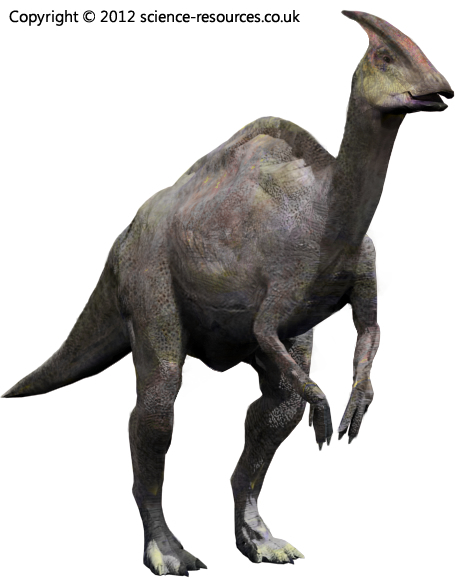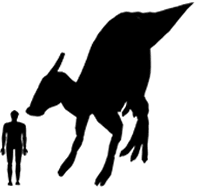Dinosaurs: Saurolophus
Saurolopus belonged to a group of duck-billed
dinosaurs called Hadrosaurs. Other members of this family included Lambeosaurus,
Corythosaurus and Hypacrosaurus. Like all other Hadrosaurs, Saurolophus had a
toothless, wide beak with hundreds of tightly packed teeth in the back of its
mouth which allowed it to grind up tough vegetation.
Fossilized footprints, piles of bones, and nesting sites
suggest that Saurolophus, and other Hadrosaurs, travelled in large herds.
Saurolophus had a small crest on the top of its head. Duck-billed Dinosaurs with crests were called
Lambeosaurs.
Like other Lambeosaurs, Saurolophus crest was hollow and connected to its
nose and throat by a series of complex tubes. There are a number of theories on
the purpose of these crests, these include: making sound, cooling device,
attracting mates, and enhance its sense-of-smell.
Fossilized tracks show that duck-billed dinosaurs often
walked on all fours, however Saurolophus could of easily stood on its hind
legs to feed or defend itself.
Saurolophus
(Lizard Crest)
Pronounced: SAW-oh-LOAF-us


Name Means: Lizard Crest"
Length: 40 feet (12 m)
Height: 13 feet (4 m)
Weight: 3 tons (2,700 kg)
Diet: Herbivore (Pine
Needles, Leaves, Twigs)
Time: Late Cretaceous - 70 million years ago
Habitat: Swamps ?
Fossils Found: Asia, North America
You may also be intrested in:
Tags: How big was Saurolophus, Saurolophus size, where does Saurolophus live, how tall are Saurolophuss, what does Saurolophus mean, Saurolophus, Saurolophus facts